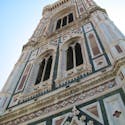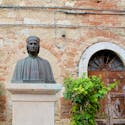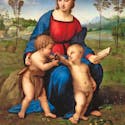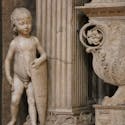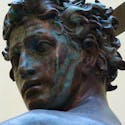Francesco Furini was a great Florentine painter although he continues to be an almost completely unknown artist. He was a master of Italian Classicism in Florence, and was the main representative of Florentine Baroque painting at the beginning of the 17th century.
Born in Florence in 1603 from a numerous yet poor family, Furini learned the basics of drawing from his own father. In 1619 he traveled to Rome to study Classical figures and the arts. While there, he is exposed to the influence of Caravaggio and his followers. When he comes back to Florence, he becomes a popular and estimated painter. Among his fans in Florence are Galileo Galilei and Guido Reni.
In 1633, after receiving harsh criticism for his female nudes, Furini decides to become a priest and retreats to the rural church of Sant'Ansano in Mugello.
From 1639 to 1642 he designs and paints the two frescoes for Ferdinand II dei Medici depicting the Platonic Academy of Careggi and the Allegory of the Death of Lorenzo the Magnificent at the Pitti Palace.
Francesco Furini dies in Florence on August 19th 1646.
Works in Florence
A famous painter of the 17th century, Francesco Furini, played an important role in Florentine and Italian Baroque painting, thanks to his female nudes depicted according to the Classical ideal of beauty. His style is characterized by soft, round lines, sensual as well as painful figures, that clearly differ from Titian's carnal figures.
At the Pitti Palace, within the Silver Museum, you'll find the two beautiful frescoes depicting Platonic Academy of Careggi and the Allegory of the Death of Lorenzo the Magnificent.
At the Palatine Gallery (also within the Pitti Palace) there is also Hylas and the Nymphs, a real masterpiece that brought him to the attention of the Medici, and Painting and Poetry.
Unfortunately, many of Furini's works aren't displayed in museums, and instead are kept in the Uffizi Gallery's deposits! We hope his works will be studied and appreciated more in the future so that they will be merit being displayed in the museums.

